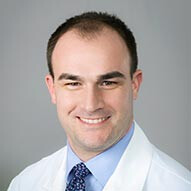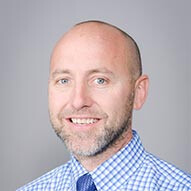Lordosis (swayback) and kyphosis in children
What is lordosis (swayback) and kyphosis in children?
All spines curve slightly inward at the lumbar (lower back) region and outward at the top of the spine, below the neck.
Lordosis (also known as swayback) is when the lower back, above the buttocks, curves inward too much, causing the child’s abdomen to protrude and buttocks to stick out.
Kyphosis is when the upper spine curves too far outward, forming a hump on the upper back.
Both conditions usually correct themselves without treatment. But if the curve progresses, our spine specialists will choose the best treatment option to correct the curve or minimize further curvature, and have your child standing tall.

What are the different types of Kyphosis?
There are three types of kyphosis.
Postural kyphosis - The most common type is postural kyphosis, caused by poor posture or slouching. It’s most common in adolescent girls and rarely causes problems other than minor discomfort and possibly a slightly rounded top part below the neck. Treatment for this type of kyphosis usually includes teaching proper posture and physical therapy to strengthen back muscles.
Scheuermann's kyphosis - Named for a Danish radiologist, Scheuermann’s kyphosis is more prevalent in boys, shows up in adolescence, and sometimes runs in families. Symptoms may include:
Hunchback
Rigid spine
Difficulty breathing, if the curve is severe
Congenital kyphosis - This rare form of kyphosis is present at birth and occurs when the vertebrae fuse together or develop unnaturally in the womb.
What are the signs and symptoms of lordosis?
Most children with lordosis do not experience any symptoms other than slight muscle strain caused by the curve in their lower back. An easy way to determine if your child has lordosis is to have him or her lie flat on the floor. Look at the space between the floor and your child’s lower back. If there’s a significant gap, your child most likely has lordosis.
How is lordosis (swayback) and kyphosis in children diagnosed?
A comprehensive medical evaluation by a spine center specialist may include the following:
A medical history
A physical exam
An x-ray or other image taken by a pediatric radiologist
Neurologic evaluation, especially if the patient is experience tingling, muscle spasms or bladder/bowel control issues.
If your child is experiencing any of these symptoms, we recommend seeing a physician right away.
How is lordosis (swayback) and kyphosis in children treated?
Both lordosis and kyphosis usually warrant only observation to make sure the curves are not getting worse. In both cases, surgery is very rare. If your child’s spinal condition progresses to where a non-operative treatment is necessary, our spine experts will choose the best treatment to heal your child’s back as quickly as possible.
Observation
Pain relievers
Bracing
Mehta casting
Learn more about diagnosis and treatment.
Lordosis (swayback) and kyphosis doctors and providers
 Christopher Redman, MDOrthopedic Sports Medicine Surgeon
Christopher Redman, MDOrthopedic Sports Medicine Surgeon Brian Gutknecht, PA-CPhysician Assistant - Orthopedics
Brian Gutknecht, PA-CPhysician Assistant - Orthopedics